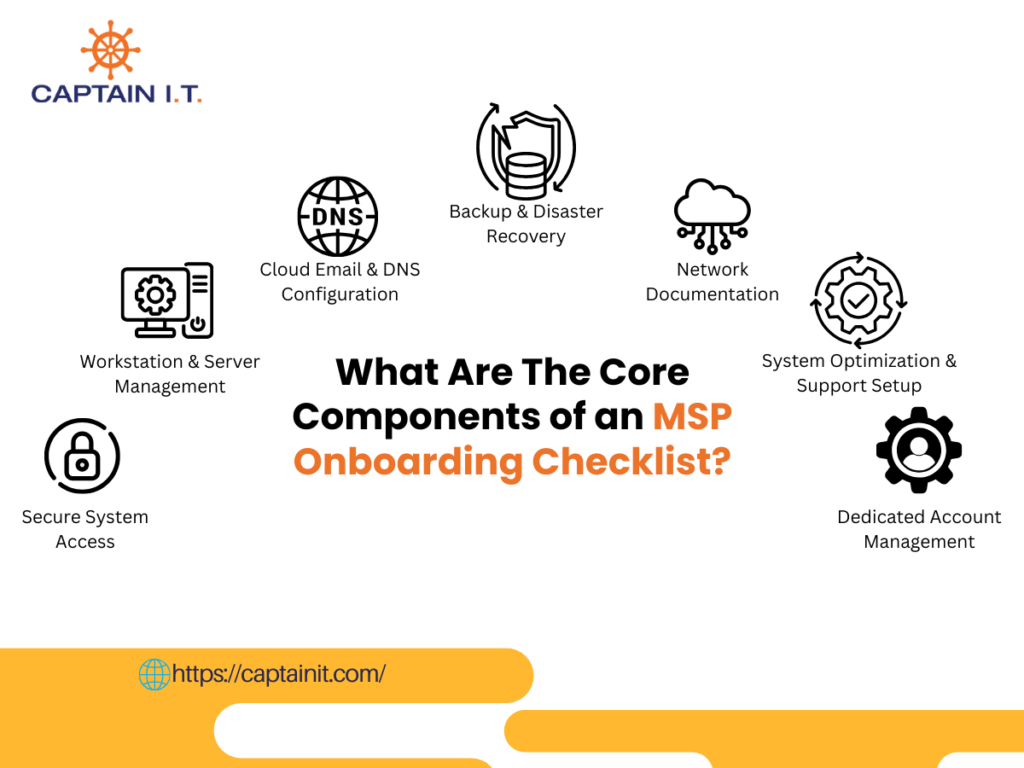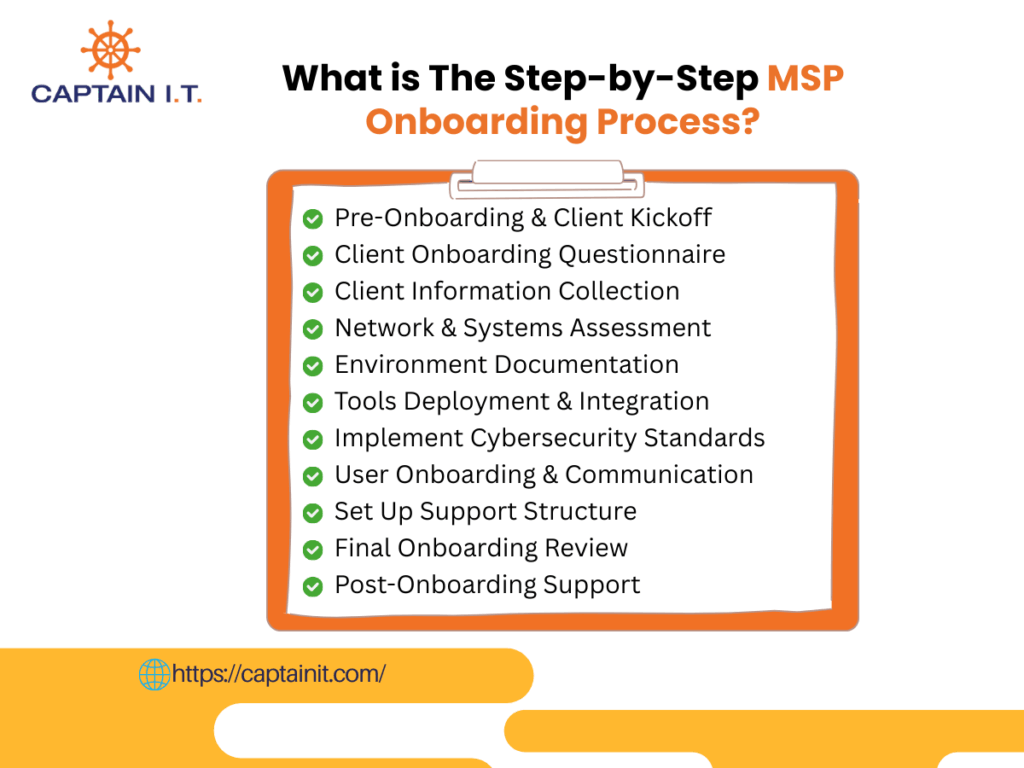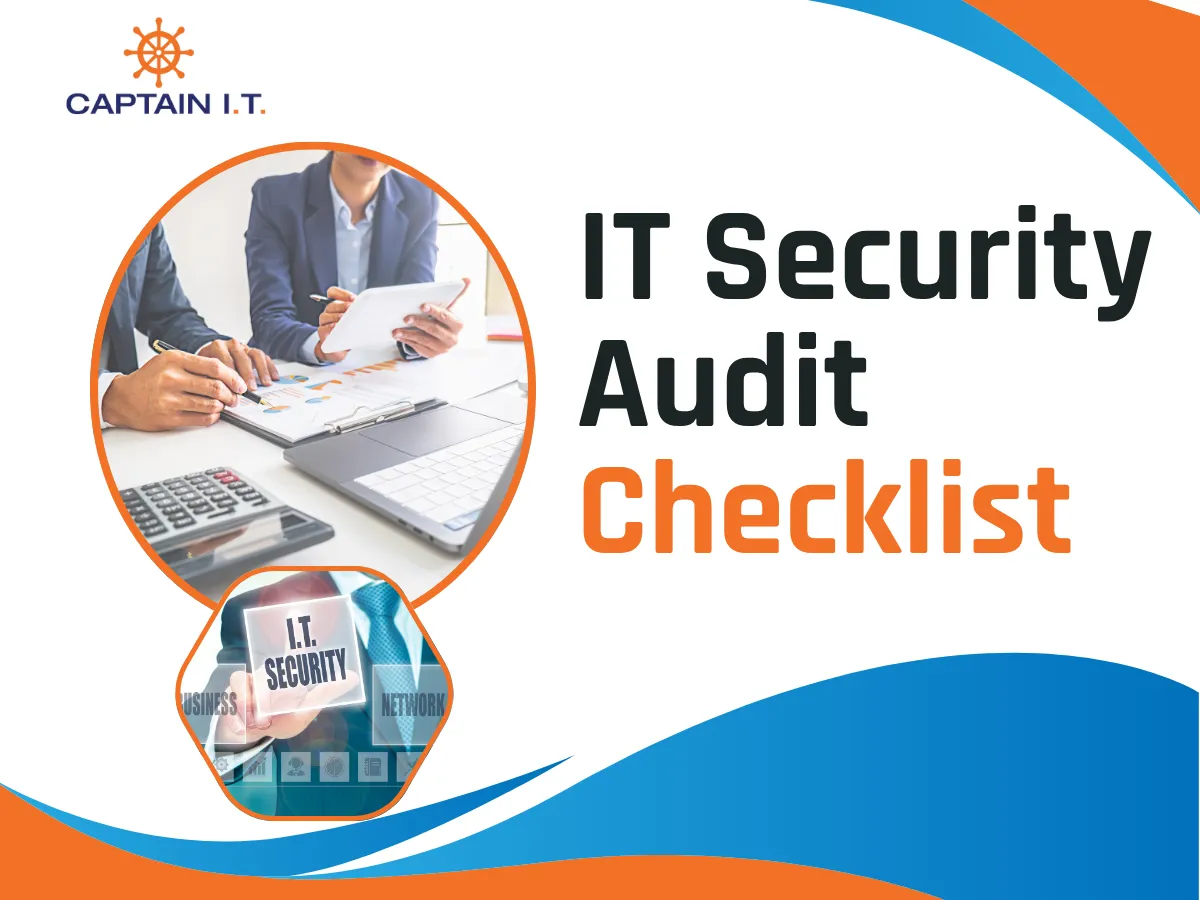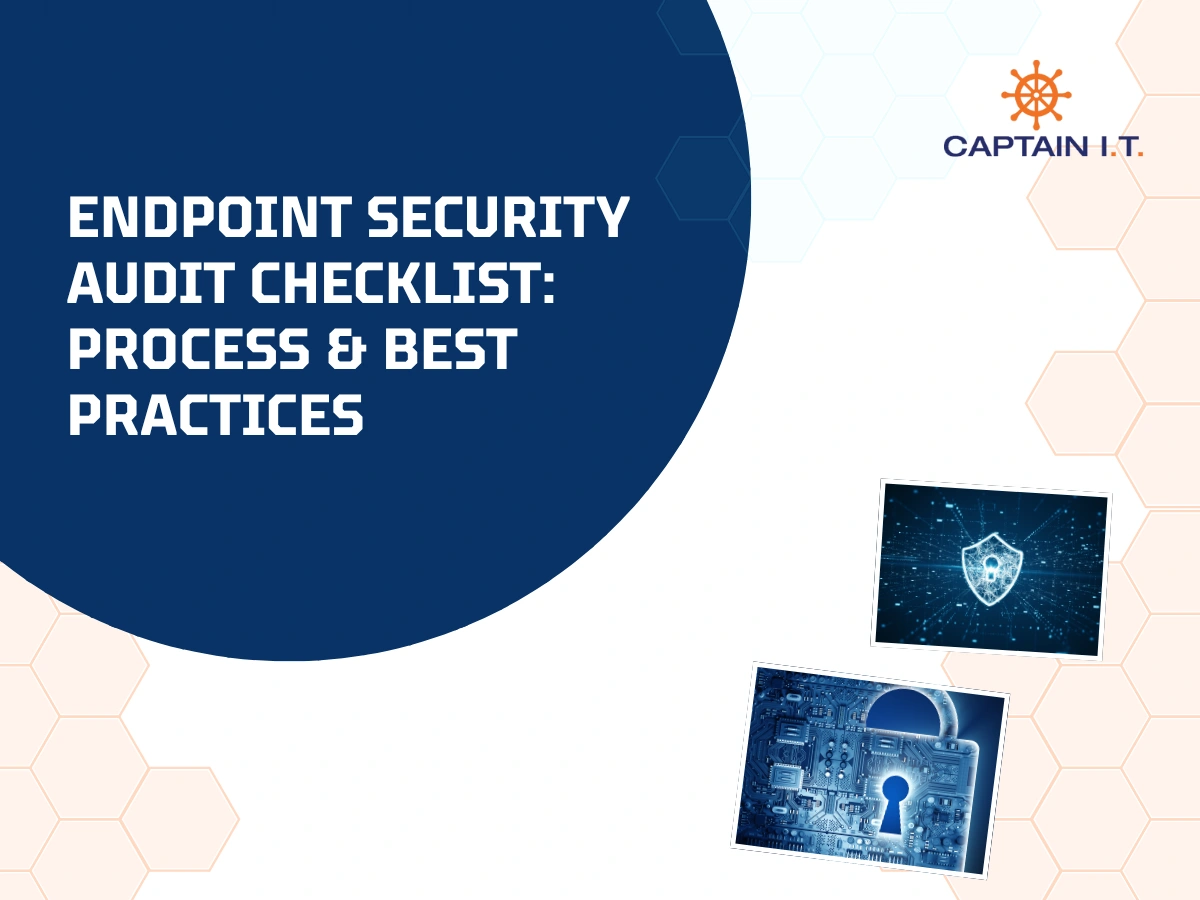Onboarding is the first and most important step in delivering reliable managed IT services. A well-designed MSP onboarding checklist helps guide the transition from a signed agreement to a fully supported and secure IT environment. From the first client intake meeting to securing access credentials and mapping out the current infrastructure, every step is intentional and essential.
This blog breaks down the entire onboarding framework into clear, manageable phases. It covers the early collection of business data, environment assessments, and the deployment of critical tools such as RMM and PSA platforms. Readers will learn how to configure cybersecurity protocols, onboard users with confidence, and finalize the transition with a documented support process and formal handoff.
Whether you’re building your first onboarding flow or refining an existing one, this guide outlines all the key components needed to deliver a consistent, secure, and scalable onboarding experience for every new client.
What is the MSP Onboarding Process?
The MSP onboarding process is a structured transition process of integrating new clients into an MSP’s services. It includes incorporating a new client’s IT systems, data, and users.
The main purpose of client onboarding is to ensure that the client, including small and mid-sized businesses (SMBs) and enterprises, understands the service offering of the external provider and sets up the necessary infrastructure. By defining service scope and establishing technical configurations, third-party service providers ensure system compatibility and a clear support structure before the start of active service. As a result, the onboarding process offers a smooth integration, security, and service readiness.
MSPs provide a streamlined client onboarding checklist that helps them gather critical client information, necessary for deploying remote monitoring and management tools, establishing user accounts, and implementing cybersecurity standards for thorough service-level agreements (SLAs) and ongoing success.
Why is a Comprehensive MSP Onboarding Checklist Important?
A comprehensive MSP onboarding checklist is essential for establishing a structured onboarding framework that ensures a smooth and successful transition for new clients. By following a well-defined checklist, managed service providers can create a clear roadmap that minimizes risks, enhances operational visibility, and enables complete control over the client’s systems, network, tasks, timelines, and overall IT infrastructure.
Below are the 7 primary reasons highlighting the importance of a comprehensive MSP onboarding checklist:
- Reduces onboarding errors: Since the client onboarding checklist standardizes processes across projects, it eliminates guesswork and decreases costly and time-consuming errors.
- Supports compliance: A detailed checklist ensures every regulation and industry-specific standard (HIPAA, PCI, or ISO) is addressed from Day 1. Also, helps maintain an audit trail and simplifies future audits and risk assessments.
- Aligns with SLAs: Defined response times, priority levels, and support expectations focus the resources and activities to realistic objectives while clearing misunderstandings and confusions, achieving a smooth workflow.
- Improves internal consistency: Leverages a repeatable and proven onboarding template for uniform documentation and predictable workflows across departments.
- Accelerates issue identification: Utilization of security assessment, vulnerability scans, and environment evaluations from the earliest stage makes it easier to detect issues.
- Boosts client confidence: Demonstrate a structured, responsive, and professional approach that provides comfort and increases the trust level with the client from the start.
- Tracks progress efficiently: Integrating project management tools like Trello, Asana, and Jira allows monitoring of deliverables, responsibilities, milestones, and tasks in real-time.
What Are The Core Components of an MSP Onboarding Checklist?
The core components of an MSP onboarding checklist include secure system access, workstation and server management, cloud email and DNS configuration, backup and disaster recovery, network documentation, system optimization, and dedicated account management. These critical technical and procedural aspects ensure a fully secure, documented, and optimized client’s IT environment. MSPs integrate all these aspects to deliver structured client onboarding while maintaining compliance and building long-term client trust.

Secure System Access
Establishing controlled access to systems ensures that only the right personnel have the correct permissions to use the necessary data and functionalities within an organization.
- Lock down administrative accounts
- Revoke former provider access
- Set up role-based user permissions
- Secure access to Microsoft 365, Google Workspace, and servers
Workstation & Server Management
Reliable onboarding needs proper configuration and stabilization of all client endpoints and servers that safeguard performance, streamline workflows, and increase operational uptime for better productivity.
- Standardize workstation settings
- Ensure proper alignment of server configurations with industry best practices
- Perform essential system updates and security patches
Cloud Email & DNS Configuration
Proper and systematic configuration of email systems and DNS settings ensures secure communication and reliable email delivery, safeguarding businesses from issues related to email security, deliverability, and user access.
- Verify email routing and domain DNS records
- Set up spam filtering, email encryption, and backups
- Secure Microsoft 365 or Google Workspace with multi-factor authentication (MFA) and admin controls
Backup & Disaster Recovery
Implementing automated backups and recovery plans safeguards client data and enables business continuity even during system malfunctions, cyber incidents, or natural disasters.
- Implement automated backups for critical files and systems in multiple cloud and physical devices
- Test the effectiveness of recovery and continuity procedures
- Adhere to necessary compliance requirements for data protection
Network Documentation
Documenting the entire network infrastructure clarifies the existing system, its functionality, and its interactions. This is crucial for long-term management, troubleshooting, and compliance.
- Map your network infrastructure (firewalls, switches, Wi-Fi, etc.)
- Document vendors, logins, warranties, and licensing info
- Organize everything in a secure IT management system
System Optimization & Support Setup
Optimizing the IT environment and configuring the client-facing support system requires the establishment of standard configurations and SLAs. This helps mitigate downtime while boosting responsiveness after the onboarding process.
- Standardize workstation settings
- Improve network speed and stability
- Set up ticketing, support processes, and SLAs
Dedicated Account Management
When a new client onboards, MSPs provide a dedicated account manager who handles the delivery of personalized support, trust-building, and alignment of IT operations with the client’s business strategies.
- Assign a dedicated account manager
- Establish regular check-ins and IT strategy reviews
- Provide a direct line for fast, responsive support
What is The Step-by-Step MSP Onboarding Process?
The step-by-step MSP onboarding process involves 11 sequential steps, starting with the discovery meeting and ending with post-onboarding support. These steps ensure that new clients get a fully supported IT environment, including comprehensive tech setup, security implementation, user enablement, and long-term support. Each step builds on the previous, building technical readiness and a well-documented transition. By following this process, MSPs can minimize errors, align with service-level agreements (SLAs), and deliver a scalable, consistent onboarding experience.

- Step 1: Pre-Onboarding & Client Kickoff
The pre-onboarding process begins with a discovery meeting to define and clarify client goals, expectations, and service scope. Essential elements like SLA, contracts, and confidentiality agreements are finalized. Internal responsibilities and timeline with defined milestones are established in the first stage. - Step 2: Client Onboarding Questionnaire
The second step includes a collection of essential client information such as business operations, infrastructure, compliance needs, and communication preferences. Using this data, MSPs can plan resources strategically and tailor the setup accordingly. - Step 3: Client Information Collection
MSPs move on to gather necessary credentials and system access details (DNS, firewall server, and cloud platform logins). In this stage, external providers also document hardware and software inventories for complete visibility into the client’s technology stack and develop customized strategies. - Step 4: Network & Systems Assessment
In the fourth step, MSPs conduct a comprehensive tech audit to evaluate routers, firewalls, endpoints, existing backups or antivirus systems, and other IT infrastructure. With this analysis, they can identify risks, outdated hardware, and gaps that need immediate attention. - Step 5: Environment Documentation
After the initial audit, MSPs develop a detailed IT map that includes infrastructure diagrams, software and hardware specifications, warranty logs, and licensing data. They store these records securely in a centralized documentation system for easy accessibility and future use. - Step 6: Tools Deployment & Integration
MSPs install core tools like Remote Monitoring & Management (RMM), PSA systems, antivirus, and backup platforms. They also integrate endpoints into centralized systems for ongoing visibility, automation, and support readiness. - Step 7: Implement Cybersecurity Standards
The seventh step involves deploying security policies across the client’s IT environment. MSPs deploy MFA, endpoint protection, firewall rules, and threat detection systems to keep intruders away. They also conduct a baseline vulnerability scan to establish risk posture. - Step 8: User Onboarding & Communication
Once the security measures are set, MSPs set up user accounts and assign necessary permissions. They also set up email, calendars, and productivity tools with proper documentation and basic training to help users adapt smoothly. Users also get a welcome packet that enables them to operate securely and submit support requests with ease. - Step 9: Set Up Support Structure
In this phase, the client’s support experience, including SLAs, response time, and escalation paths, is defined, and communication preferences are set. MSPs introduce a vCIO or an account manager to maintain proactive client engagement. - Step 10: Final Onboarding Review
Once everything is set, MSPs need to verify the completeness and stability of the onboarding tasks. This requires clients to review the documentation, process to access or reach out to the helpdesk, resolution of technical issues and remaining questions, and a formal sign-off. - Step 11: Post-Onboarding Support
After onboarding new clients, MSPs closely monitor continuously for the first 30-60 days and resolve any onboarding issues. They collect feedback, schedule the first Quarterly Business Review (QBR), and implement proactive support and strategic IT planning.
What Are The Best Practices for MSP Onboarding?
The best practices for MSP onboarding range from setting clear expectations and using standardized templates to securing environments and following up after go-live. These proven methods help streamline the client onboarding process, improve consistency, and drive long-term client satisfaction. Following these practices ensures enhanced communication, error reduction, and the generation of a positive experience.
- Start with Clear Expectations
Define service boundaries, response times, escalation paths, and deliverables before onboarding begins. This avoids confusion and ensures both teams are on the same page. - Use a Standardized Onboarding Template
Use the same onboarding checklist for all clients with room for customization. Assign task owners and deadlines to hold people accountable and prevent steps from being missed. - Send a Pre-Onboarding Questionnaire
Use a digital form to collect critical information like business hours, infrastructure, and key contacts. This allows technical planning to start before hands-on setup begins. - Document Everything Early
Start client documentation on Day 1, including network maps, device inventories, credentials, and vendor information. Store everything in a central location for easy access and long-term support. - Audit Before You Act
Conduct a full IT assessment before you even start. Use the results to prioritize and present to the client during the onboarding review. - Deploy MSP Stack Consistently
Deploy a standard stack of tools like RMM, PSA, antivirus, and backup across all client endpoints. Automate to speed, consistency, and accurate asset tracking. - Secure the Environment Immediately
Apply MFA, password policies, and firewall rules during initial setup. Do a baseline scan to identify and close critical security gaps first. - Provide User Training & Orientation
Do intro training sessions to walk users through support channels and best practices. Include a welcome packet with contact info, FAQs, and simple user instructions. - Track Progress with a Project Plan
Treat onboarding like a project by setting milestones and timelines. Use project management tools like Asana, Trello, and Jira to coordinate tasks and communicate with the client. - Conduct a Final Onboarding Review
Review onboarding tasks with the client and confirm expectations were met. Verify system readiness and get a formal approval before moving to ongoing support. - Follow Up After Go-Live
Monitor for 30–60 days to address any post-onboarding issues. Collect client feedback and use it to refine your onboarding framework.
Ensure Seamless Client Onboarding with the MSP Onboarding Checklist
A structured step by step-by-step MSP onboarding checklist ensures that every aspect of your IT environment is addressed with clarity and accuracy. This approach secures systems, prepares users, and establishes a stable foundation for long-term IT support while aligning the setup with your business objectives.
Captain IT provides this level of precision through comprehensive managed IT solutions that are customized to fit your organization. From initial access setup to proactive support systems, Captain IT ensures your technology environment is secure, scalable, and fully aligned with the needs of your business.



